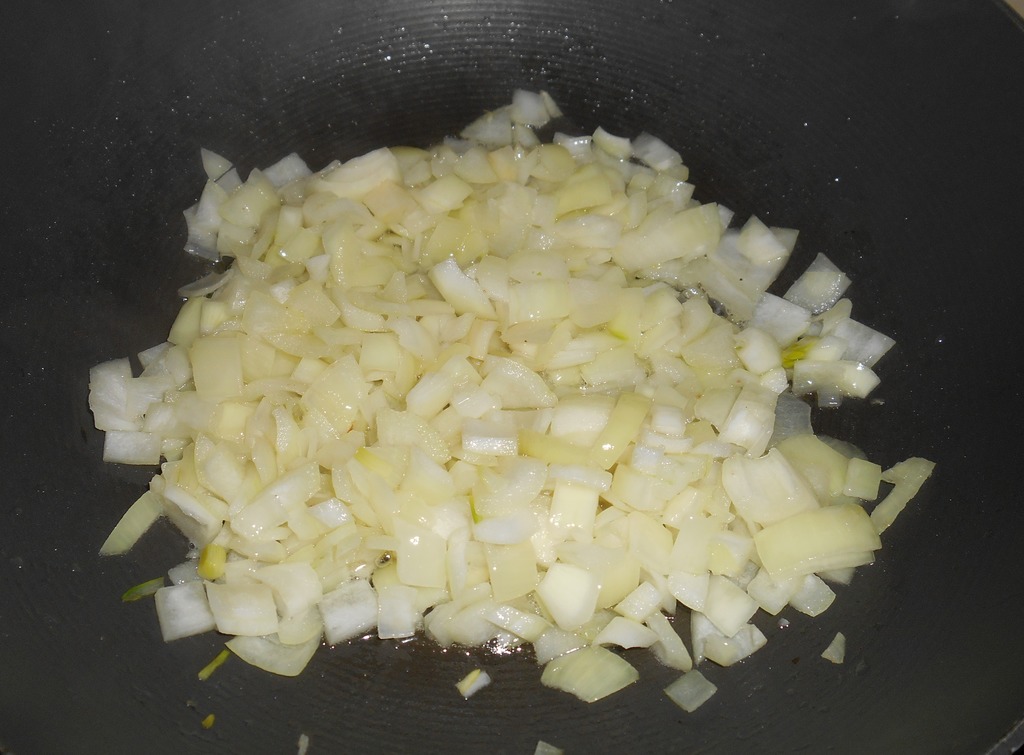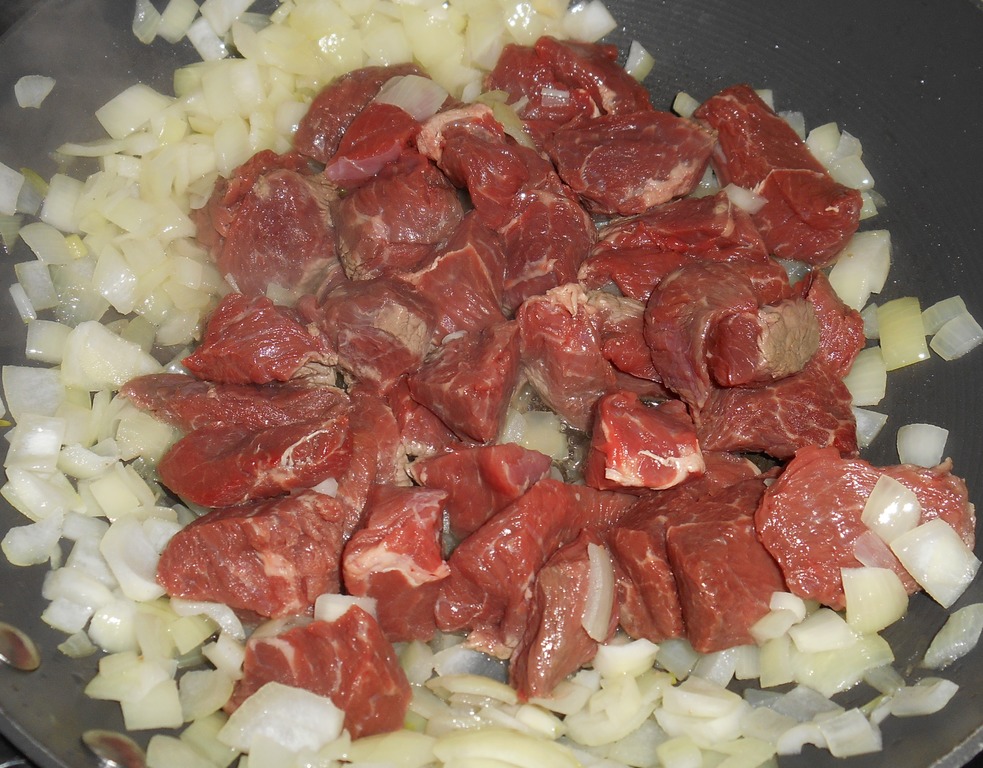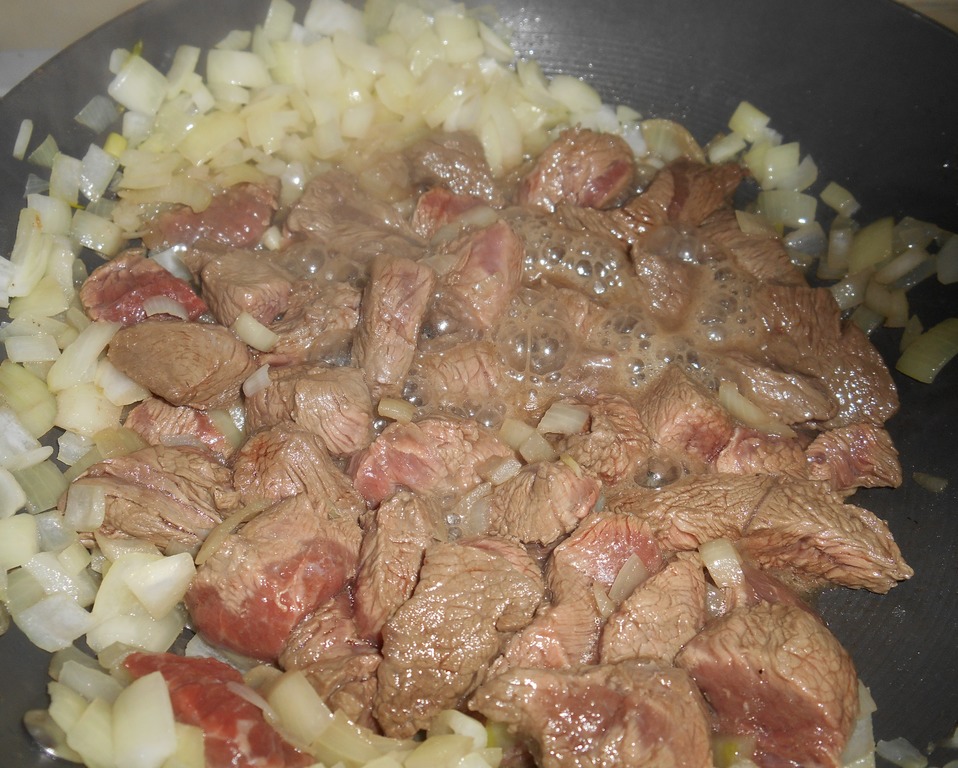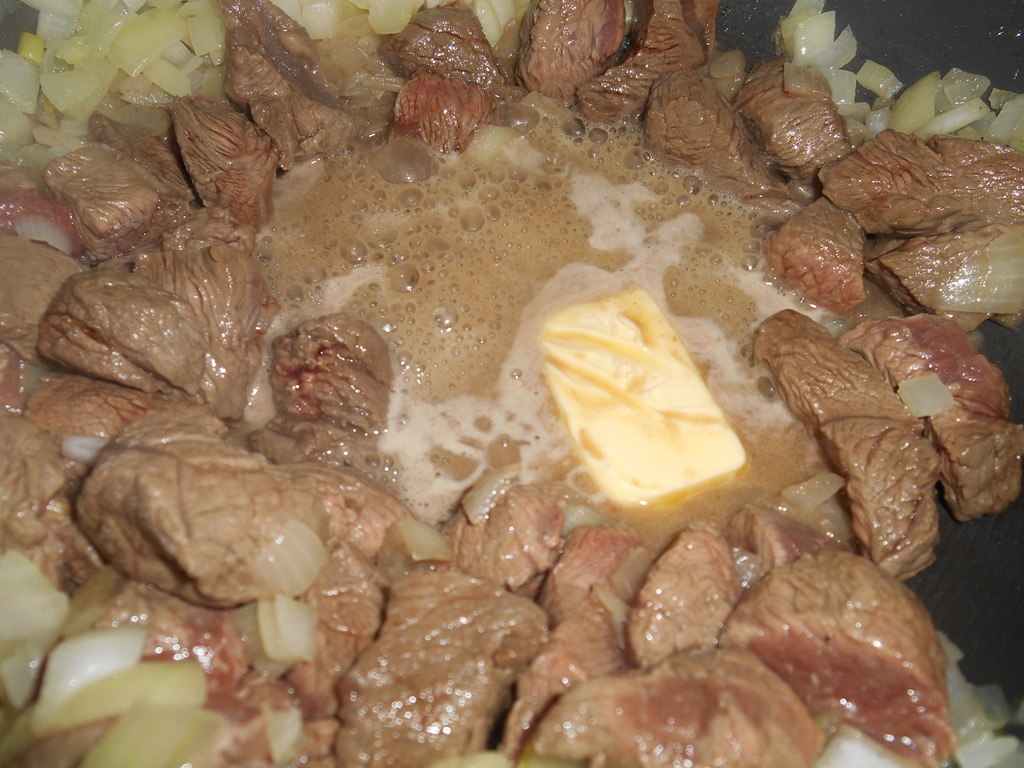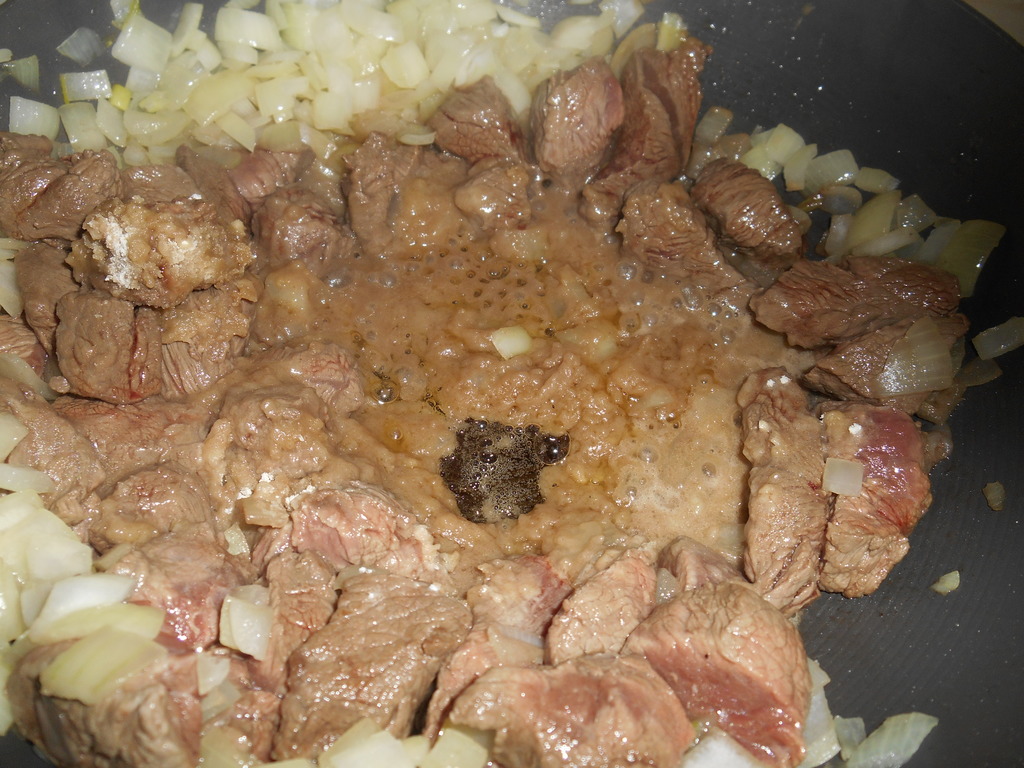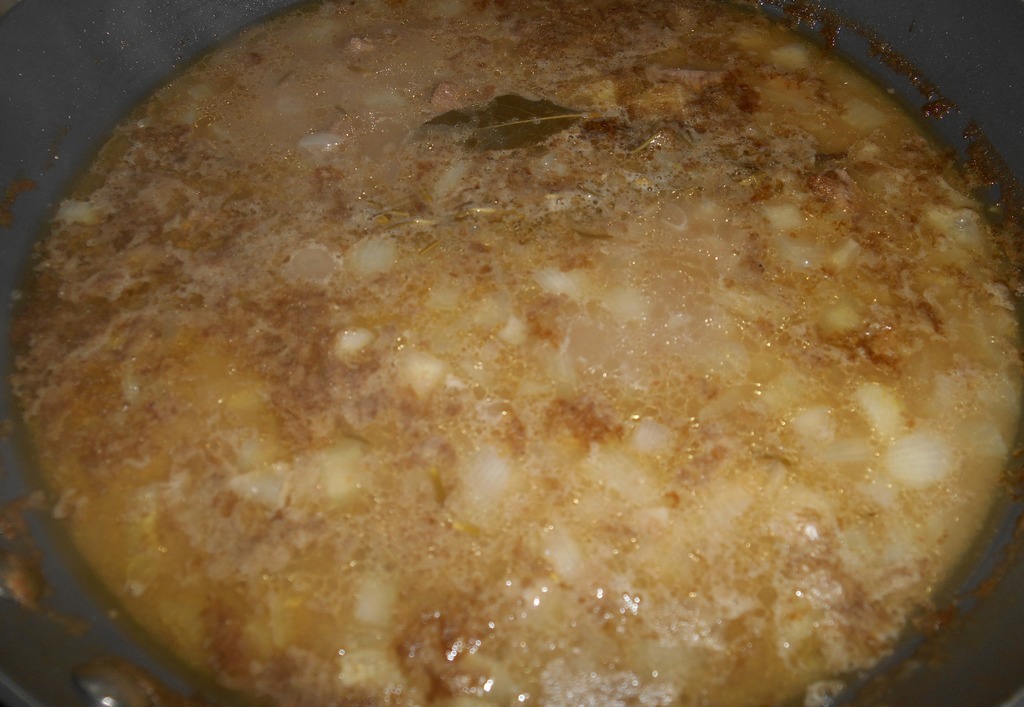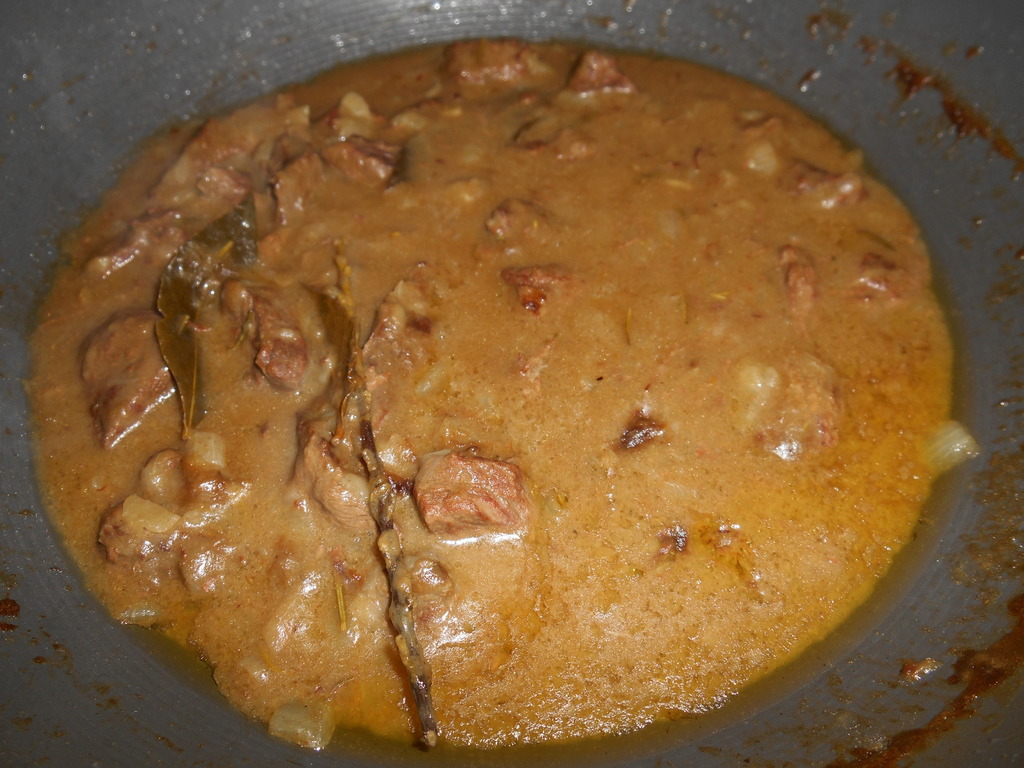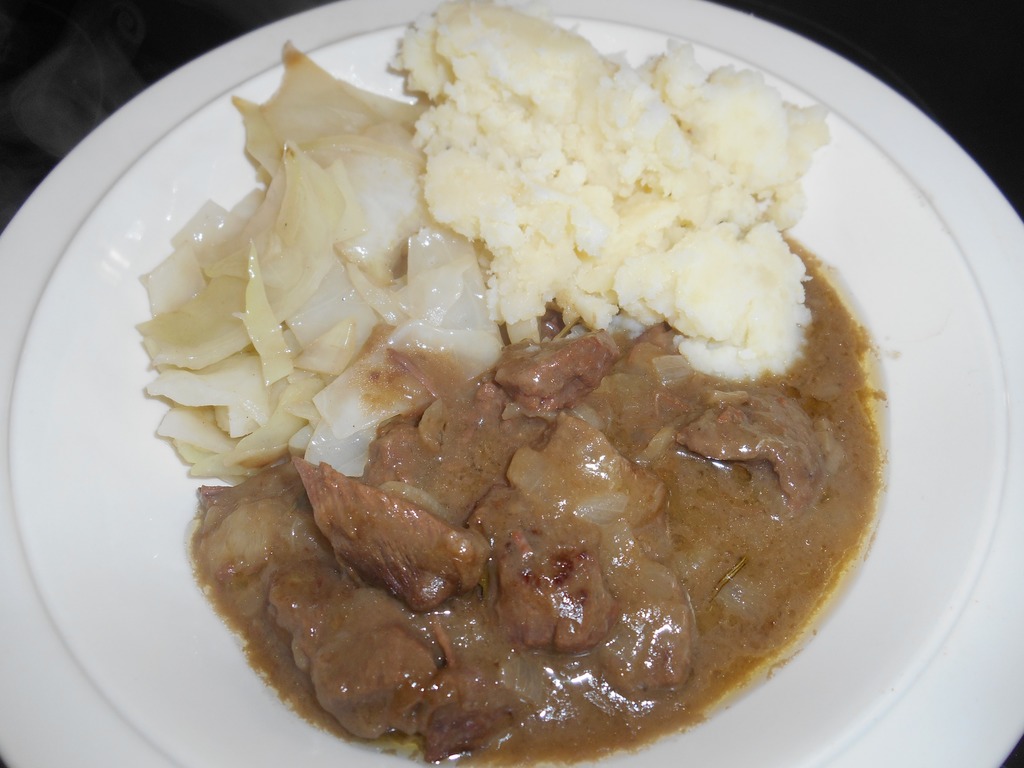An Amazingly Yummy Simple Stew
This is a recipe for simple stew which has very few steps and not many ingredients. There are only two key factors
- quality ingredients
- slow cooking
It may be simple, but it works which is a good thing right?
Ingredients
| 2 lbs | blade steak cut into 1″ cubes or if you prefer slices about 1″ × 2″ |
| 3 | onions |
| 2 fl oz | virgin olive oil |
| 3 oz | butter |
| 3 dessert spoons | flour (plain) |
Blade steak is cut of beef from the “shoulder” of the animal. It may have a single line of connective tissue running down the middle. If you don’t like this cut it out whilst you’re cutting up the meat. Rather than throwing this away, add it to the stew as it will add flavor and texture – just don’t serve it.
Muscles which have worked the hard, such as blade, have the best flavor but because they have worked hard they are considered tough. The right cooking results in soft tender meat and any connective tissue breaks down to become gelatin which enriches the sauce.
Extra Virgin and Virgin olive oil are produced just by pressing olives. Anything else has been extracted using chemicals and/or heat. Oil labelled simply as ‘Olive Oil‘ is usually a mixture of Virgin and oil refined by chemicals or heat. Extra Virgin oil is made from the first pressing of olives and has a stronger flavor, which is why some people prefer to cook with Virgin oil which, made from second pressing of olives and has a more delicate flavor.
Preparing and Cooking Ingredients
Put a large pan on cooker and turn to medium heat.
Whilst the pan warms chop up the onions.
When the pan has warmed pour in olive oil, as the oil heats in the pan it will get much thinner and expand to as much as double the volume.
When the oil has heated and thinned, put the onions in the pan and fry gently till they become translucent, stirring occasionally.
Meanwhile cut up the meat into 1″ cubes or if you prefer slices about 1″× 2″.
Don’t cut the meat too small otherwise it will turn to mush with cooking.
When the onions are translucent push to the side of pan and add the meat.
Stir the meat around so it gets brown on all sides, perhaps turn the heat up a little.
We’re going to use butter and flour as thickening agent.
Push the browned meat to side of the pan.
Add the butter to center of the pan and let it melt.
When the butter has melted add 3 dessert spoons of plain flour.
Stir the flour into melted butter and continue to stir for 2 minutes or so as the flour begins to cook.
Then stir everything to mix butter and flour with onions and meat.
Stir everything around to ensure the meat and onions are evenly covered with flour.
Add stock or just plain water to cover the meat and onions, depending on size and shape of pan you may need 2 or 3 pints.
Bring to simmer.
Cook for 10 minutes.
Add herbs if your wish, here I’ve used bay leaves and rosemary.
Then turn heat down to low and leave to gently bubble away, if it looks like a subdued volcano with just one or two bubbles a minute and a little steam that’s fine.
The temperature will settle to roughly around 140-160ºF (60-70ºC).
Stir every 30-60 minutes to prevent sticking to bottom of pan.
Top up with water if you feel stew is getting too dry
Leave cooking for 5-6 hours.
You can even turn off the heat and leave the pan on cooker ring, there will still be some heat in pan for cooking to continue.
Eventually the liquid will reduce and you will be left with thick stock and meat will be tender, almost melting.
Remember, as Gordon Ramsay always says, the most important thing for a cook to do is to taste every now and then. Tasting will enable you decide if the stew is done and how much seasoning is needed. Just be careful not to burn yourself.
This may not be how cook books say to cook stew, usually 1½ to 2½ hours at 300-340ºF (150 to 170C), but what’s the rush? Besides slow cooking leads to softer tenderer tastier meat.
Add salt and pepper towards the end of cooking (last 60-30 minutes). If you add seasoning before the stock has reduced it’s hard to judge the correct amount.
Always add too little as you can always add more but you can’t take any out if you add too much.
You can eat your stew with
- potatoes and vegetables
- rice
- or just bread
If serving with bread you can leave the sauce runnier and soak it up with bread, a bit like a soup.
Many people feel the flavor improves if the stew is left overnight in fridge.
Stew with mashed potato and cabbage.
Variations
All over the world people have been cooking some sort of stew since there has been fire, well maybe fire and a pot, so there are many different variations.
But almost all are variations on this recipe, it makes sense to get comfortable with something simple before trying anything more complicated. Here are just a few of many many possibilities.
Having cooked stew put it in a dish, cover with mashed potato, top with grated cheese and bake.
Put cooked stew in dish, top with pastry and bake to make a pie.
Use leeks instead of (or as well as) onions.
Use one or more of
- garlic
- shallots
- carrots
- tomatoes
- potatoes
- swede
- turnip
- celery
- mushrooms
Try dumplings
Try different meat or a combination of meats
- pork
- lamb
- venison
- boar
As well as stock or water use
- beer
- cider
- wine
And this is barely scratching the surface of the many possibilities.
Happy cooking and eating, lets us know how you get on.

